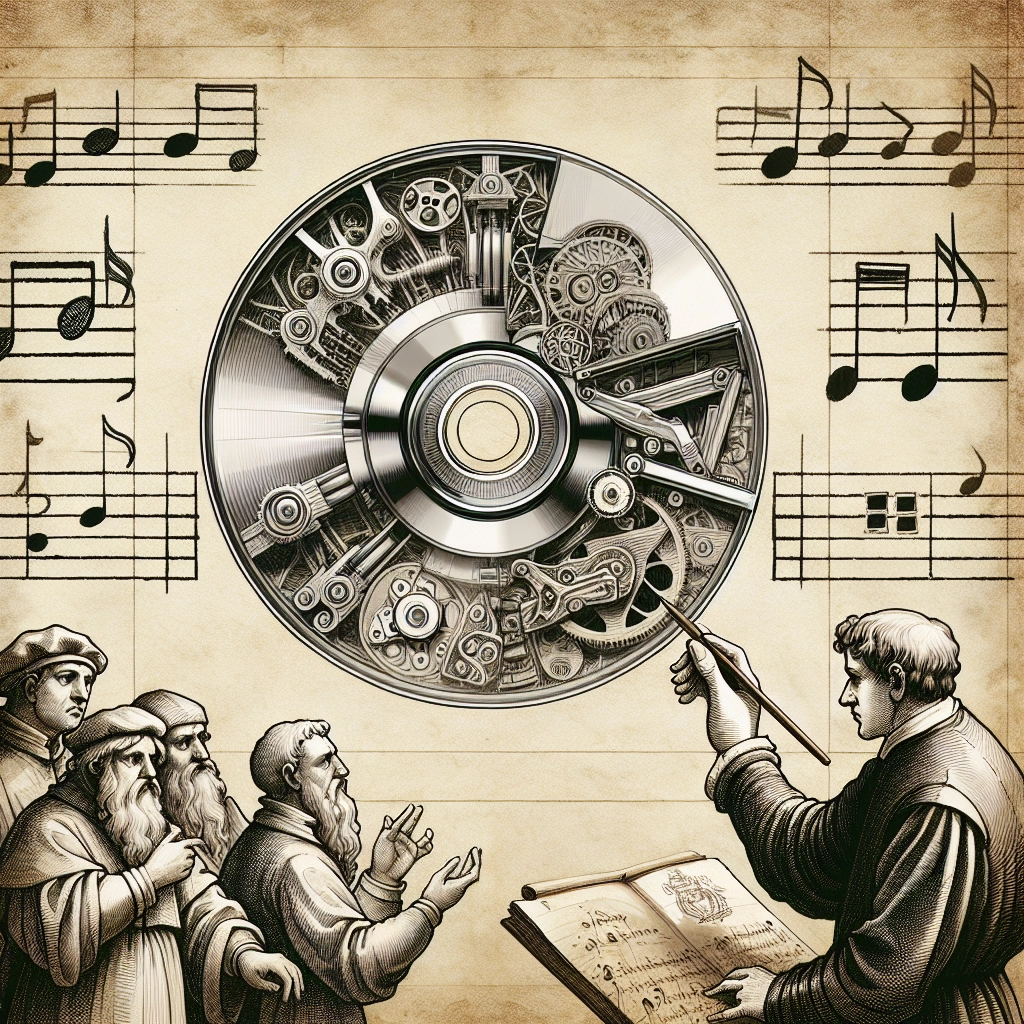
- Published on
- Authors

- Name
- ric de yuga 😄
💿 Decoding the Disc: How Does a CD Store Music? 💿
Compact Discs (CDs) revolutionized the way we store and listen to music, providing high-quality audio in a durable and portable format. But have you ever wondered how a CD stores music? Let's dive into the technology behind CDs and explore how digital information is encoded on these shiny discs to produce sound.
🔬 The Science of CD Storage 🔬
CDs store music digitally, using a combination of optical technology and precise encoding methods to capture and reproduce audio with high fidelity.
🧠 How CDs Store Music 🧠
🌀 Digital Encoding:
- Digital Audio: Music is first recorded in a digital format, typically using a sampling rate of 44.1 kHz and a bit depth of 16 bits. This means that the audio signal is sampled 44,100 times per second, with each sample represented by 16 bits of data.
- Binary Data: The digital audio is then converted into binary data (a series of 0s and 1s) that represents the sound waveforms.
💿 CD Structure:
- Layers: A standard CD consists of multiple layers, including a polycarbonate plastic base, a reflective aluminum layer, and a protective acrylic coating.
- Pits and Lands: The binary data is encoded onto the CD as a series of microscopic pits (indentations) and lands (flat areas) on the reflective aluminum layer. The transitions between pits and lands represent the binary data.
📡 Reading the CD:
- Laser and Photodetector: A CD player uses a laser beam to read the encoded data. The laser is directed at the reflective surface of the CD, and as the disc spins, the laser beam moves across the tracks.
- Reflection and Detection: When the laser hits a land, it reflects directly back to a photodetector. When it hits a pit, the reflection is scattered. The photodetector senses these changes in reflection and converts them back into binary data.
- Digital to Analog Conversion: The binary data is then processed by the CD player's digital-to-analog converter (DAC), which converts the digital signal back into an analog audio signal that can be amplified and played through speakers or headphones.
🌍 The Anatomy of a CD 🌍
Understanding the physical structure of a CD helps explain how it stores and preserves digital information.
💿 Key Components:
- Polycarbonate Layer: The base layer of the CD, made of clear polycarbonate plastic, provides structural support and protects the data layer.
- Data Layer: The reflective aluminum layer contains the encoded pits and lands that represent the binary data.
- Protective Coating: An acrylic layer protects the reflective surface from scratches and damage.
🌀 Spiral Track:
- Continuous Track: The data on a CD is stored in a single, continuous spiral track that starts at the center and winds outward to the edge. This design allows the laser to read the data sequentially as the disc spins.
🌟 The Legacy of CDs 🌟
CDs brought several advantages over previous analog formats like vinyl records and cassette tapes.
📈 Benefits of CDs:
- High-Quality Audio: CDs provide high-fidelity sound with a wide dynamic range and low noise levels, delivering a superior listening experience.
- Durability: The robust construction of CDs makes them resistant to wear and degradation, ensuring long-term data preservation.
- Convenience: CDs offer easy access to specific tracks and the ability to skip, repeat, and program playback sequences.
💾 Evolution of Digital Storage:
- Impact on Music Industry: CDs played a pivotal role in the transition from analog to digital music, paving the way for the development of other digital formats and storage media.
- Digital Downloads and Streaming: While CDs are less common today due to the rise of digital downloads and streaming services, they remain an important milestone in the history of music technology.
🌟 The Magic of Digital Music 🌟
The ability of CDs to store and reproduce high-quality audio showcases the incredible advancements in digital technology. From the precise encoding of music to the seamless playback of sound, CDs represent a remarkable achievement in the world of audio storage.
Next time you listen to a CD, take a moment to appreciate the intricate technology that allows you to enjoy your favorite music with such clarity and detail. Let's celebrate the magic of CDs and the technological marvels that brought digital music to life.
